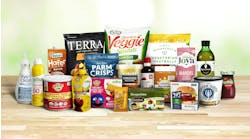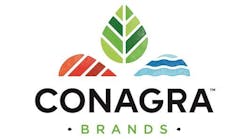If there is a theme running through this year's edition of the Top 100©, it may be less is more. As in lower sales can still mean higher profits.
Fifteen of the top 25 food & beverage companies on this list recorded lower sales in 2009 (or an early fiscal 2010) than they did in the previous year. Yet 18 of those 25 had higher net earnings.
That's not surprising when you consider that the recession hit a year earlier. According to the National Bureau of Economic Research (the official arbiter of recessions) the past recession began in December 2007, and it certainly was widely apparent early into 2008. That gave food & beverage processors the better part of a year or more to prepare for the worst.
That lag time was apparent in our Top 100© report in 2009 "If 2008 was the start of the current recession, you can't tell it from at least the sales activity of the leading food & beverage companies," we wrote last August. "Only one of the 27 largest companies on the Food Processing Top 100© reported a decrease in sales, and 16 reported increases in net income, as well."
What a difference a year makes. So even though sales slipped – down a scant $21 million at Maple Leaf Foods to the $1.4 billion (17 percent) plunge at Pilgrim's Pride – everyone already had taken or was taking the painful steps needed to make it through the darkest days of 2009.
Every year some companies come and go from our Top 100© list.
- We say goodbye to Wm Wrigley Jr. Co., which was bought by Mars Inc. at the end of 2008.
- Hello to Foster Farms (No. 42). Foster is a large, vertically integrated poultry processor and also a dairy, but as a private company it simply eluded us till this year.
- Ditto for private label cereal-maker Malt-O-Meal (No. 88).
- Mexico's huge dairy Lala Foods SA acquired National Dairy Holdings LP. Now Lala USA (No. 47) is headquartered in National's former headquarters city of Dallas.
Even Pilgrim's Pride. That poultry processor could well be the poster child of the recession, its fate seemingly sealed in the go-go days of mergers & acquisitions and cheap credit. In January 2007 it bought competitor Gold Kist for $1.1 billion, even as both companies were recording annual net losses. Like many companies, Pilgrim's Pride predicated the bank repayments on increasing sales and profitability. Instead, it recorded a $999 million loss in 2008 and filed for bankruptcy protection at the end of that year.
Yet in a year of painful austerity, it eked out a $152 million profit in its fiscal 2009. Nevertheless, to emerge from bankruptcy protection, Pilgrim's Pride had to issue a whole new class of stock, with Brazilian beef processor JBS now holding 64 percent of the company (at a cost of $800 million).
- Top Food and Beverage Companies for 2005: This chicken comes first
- Top Food and Beverage Companies for 2006: It's been a tough year
- Top Food and Beverage Companies for 2007: Kraft returns to the top
- Top Food and Beverage Companies for 2008: Succeeding in a Difficult Year
- Top Food and Beverage Companies for 2009: Licking the Recession
- Top Food and Beverage Companies for 2010: Less Is More
- Top Food and Beverage Companies for 2011: PepsiCo Takes the Lead
- Top Food and Beverage Companies for 2012: Splitting in Two
Actually, it's not fair to call JBS a Brazilian company. While the parent remains headquartered in Sao Paulo, the U.S. sales organization – composed of the former Swift & Co. and more recent acquisition Smithfield Foods' beef group – comprises 65 percent of the parent company's sales. With some acquisitions and organic sales growth, JBS USA posted the second-biggest sales gain in our Top 25, growth of 36 percent, to catapult it from No. 13 last year to at tie for No. 8 this year.
With an identical increase of $3 billion, the biggest gainer among our Top 25 was Mars Inc. Most of its sales jump is attributable to its late-2008 acquisition of Wm. Wrigley Jr. Co. – that's a name you'll no longer find on our list.
[pullquote]Back to the subject of bankruptcy, Chapter 11 created a new name on our table. After four-plus years under court protection, Interstate Bakeries Corp. emerged from bankruptcy reorganization in February 2009 as a private company. Half owned by Ripplewood Holdings and with large equity stakes by its unions, the company changed its name at the end of the year to Hostess Brands … and its address from Kansas City, Mo., to Irving, Texas.
"Everyone's sales were down 1, 2, 4 percent in 2009, but they were prepared for it," says Dexter Manning, national food & beverage practice leader for Grant Thornton LLP and a member of our Editorial Advisory Board. "In order to survive 2008, they had to cut costs and waste.
"In addition, most benefited from lower commodity ingredient and energy prices in 2009, after record-high prices in mid-2008." However, Manning notes, input costs in 2009 remained above traditional levels.
This is our 35th annual Top 100 © ranking. It's meant to rank food & beverage processors based on their sales of value-added, consumer-ready goods that were processed in U.S. and Canadian facilities. We apply the same general rules to every company, but unique interpretations seem to apply to almost every processor. As a result, you will not see most of these figures anywhere else.
All grocery store-ready/packaged foods are included and even beef patties sold to McDonald's … but not raw meat or even ground beef sold to another food processor. Not ingredients. Nor raw milk. Exports are OK, but not products manufactured overseas.
We use the most recent fiscal year for which figures are available. For all the foreign-based companies, we convert foreign currencies to U.S. dollars as of Dec. 31 or on the last day of their fiscal year, unless otherwise directed by the company. As a result currency fluctuations can distort some companies' real performance in their home currencies.
Another factor: "Some of those companies saw sales increase for their private label and economy products," although those would carry lower prices, Manning continues. "So top line pricing may have been lower [in 2009] but throughput may not have been down that much, if at all."
Manning says all those factors lay out a positive scenario going forward. "I think in 2008 the fear factor came into play big time. Things were bad, but maybe not as bad as some of these companies feared. They exacerbated the problem by overreacting in 2009, by underspending more than they needed to. No one knew where they floor was – they were all waiting for the other shoe to drop.
"Well it didn't," he continues. "While consumer confidence has been bouncing around, overall it's up over where it was a year ago. Companies now believe they have hit the bottom and the only way is up, whether that's here already or coming early next year. And they may not be ready for the recovery. They need to invest, increase capacity and hire back some people."

